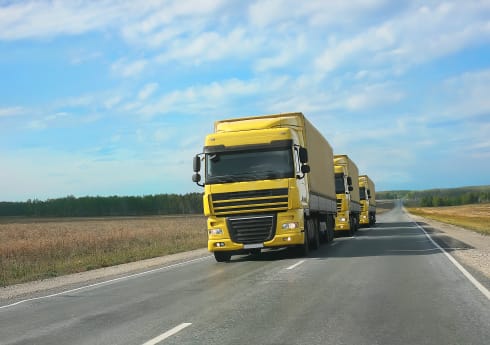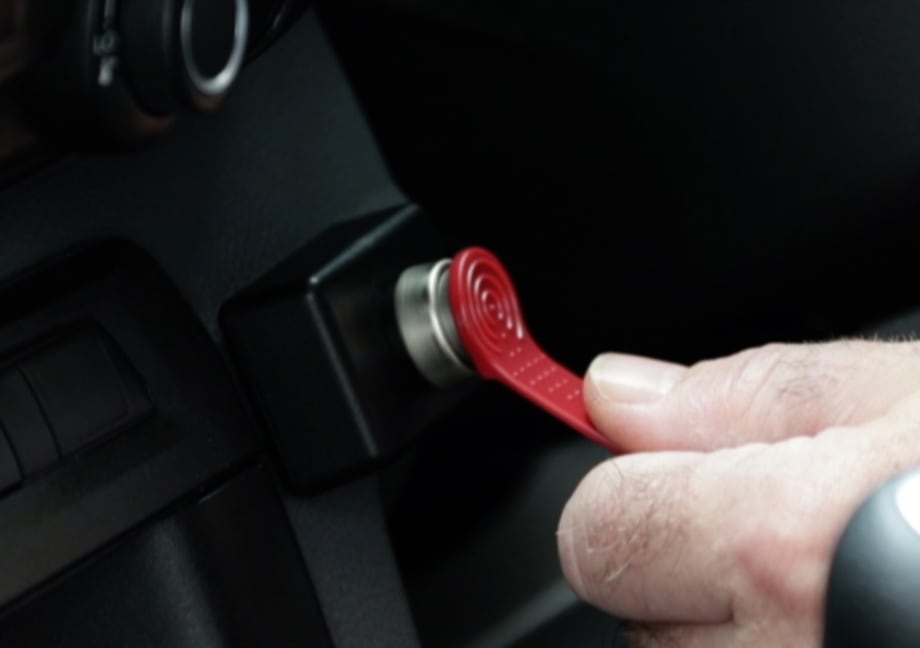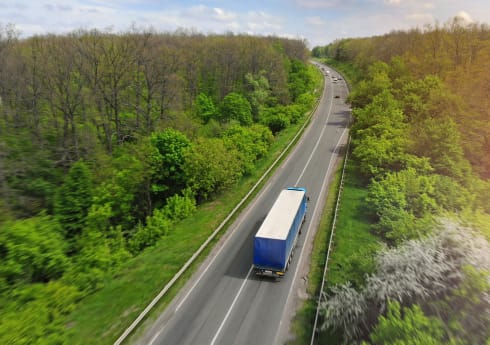Telematics Explained
There are many fleet and business owners still unsure about what telematics is. This guide explains what telematics is and how it can help UK businesses.

What does telematics mean?
Using a telematics solution can lower your overall costs, reduce your fuel consumption and decrease vehicle wear and tear. You can keep a closer eye on your vehicles by setting up geofences. You can even set up alerts based on mileage, driver behaviour, geofencing or time.
Telematics relates to remotely tracking the location and activities of vehicles and moving assets. If you’re familiar with vehicle tracking, you’ll have no issue understanding telematics. If not, you might want to give our short guide to vehicle tracking a read.
Also connected to telematics is GPS tracking but it’s much more than merely knowing the location of your vehicles. It can unlock new ways to help you save money and boost your business. It’s the modern way to manage a fleet and the best solution to help you stay competitive.
How does telematics work?
Using GPS trackers or other similar vehicle trackers to connect to an asset, a telematics system collects key information about that asset.
Telematics devices receive and transmit a direct data feed from the following devices:
- The Engine Control Unit (ECU) / the Controller Area network (CAN) bus of the vehicle or asset being tracked
- The vehicle tracking unit for GPS location and relevant road speed
- Information from the Tacho head to collaborate exact working hours and Driver ID
- Independent temperature probes and/or fridges installed on the vehicles if they carry temperature-controlled goods
- Vehicle cameras with G-Force sensors to trigger events with video footage attached sent to the tracking platform
Once telematics retrieves the data, you can find it uploaded in the telematics system’s software. There, in the online system account, you can find all kind of useful reports.
What types of data can telematics capture?
Fleet telematics systems can read and analyse information from many types of devices. For example:
- Power take-off sensors detect if parts of an asset are activated, such as doors opening and closing, sirens and blue lights, moving parts of construction vehicles and so on
- Vehicle cameras can transmit footage via the cloud that is visible in telematics software
- Data direct from the vehicle’s fuel gauge can calculate exactly how much fuel is used and a precise MPG performance
- Telematics meaning also includes reports on how the driver handles the vehicle
- Tachograph information to check compliance with the working time directive and highlight any infringements
Top benefits of telematics systems and why you should invest in telematics
Telematics meaning can be synonym with wonders for your fleet, believe it or not. There are so many ways in which your business can benefit that you’ll be sorry you didn’t get telematics earlier.
1. Increase fleet efficiency and customer satisfaction
There are many ways in which telematics can help you tackle fleet inefficiency. Just think how many times your vehicles have been delayed by traffic jams or breakdowns. How many times were your customers dissatisfied by a late arrival or your inability to provide an accurate estimated time of arrival?
Telematics systems allow you to track the position of your vehicles, see traffic jams on your route and plan better routes to minimise any delay. You’ll also be able to provide your customers with more accurate ETAs and near-instant updates, as well as answer their questions quickly and professionally.
2. Save money with telematics
This is the ultimate benefit for most businesses. Telematics provides a clear insight into your operations so you can easily identify improvements to undertake.
Let’s take the fuel-waste as an example. Telematics can measure how much fuel is wasted. You can compare the driver against specific goals you set them. Telematics software tells you exactly how much fuel you’ll save each month when they reach their targets and how much is saved week by week. With a full telematics system, the actual impact on fuel consumption is measured precisely in real-time.
With this added visibility, you can properly access your operational costs and make real improvements to routes, schedules, resource allocation and many other operational variables.
iCompario tip:
A telematics box is a small device installed in your vehicle. The device sends data about your driving to the insurance company, which gives you a driving score based on this data. Get a good driving score and lower insurance premiums. Learn more about how telematics helps with car insurance.
3. Tackle bad driving habits
Do you know how your drivers are treating your vehicles? Bad driving habits have many negative impacts. First and foremost, they’re a safety concern. They waste fuel and they make your vehicles break down faster, keeping them off the road too often.
In this case, a speed tracking device will detect deceleration or “harsh braking” from the ECU, which means you’ll get accurate, reliable readings. It allows you to track driver behaviour in real-time, take measures to correct bad behaviour and reward good driving.
4. Stay on top of vehicle maintenance
Having vehicles off the road so they can be repaired can be costly to your business. So how does telematics work when it comes to car maintenance?
Fault codes and alerts will be issued when you integrate telematics into your fleet management. This means you’ll be aware of problems as they arise so you can act quickly and reduce the time your vehicles are off the road.
You also get CAN bus data. This is information pulled from the diagnostics of your vehicles straight into the telematics platform. View information like fault codes, braking, speed, fuel consumption, oil pressure, water temperature, distance readings and idling information.
You can even check minute by minute activity prior to an accident. Plus, set custom reports that show the information you wish to see.
5. Keep your vehicles and drivers safe
Safety and security are a big part of any company’s policy. How does telematics work with that? It’s actually easy and quite handy.
Telematics gives you the live location of your vehicles 24/7 and also utilises geofences. That means you can set a perimeter or create a virtual zone and get alerted every time a vehicle enters or leaves that perimeter or zone.
Then, you have cameras that can be integrated with some telematics systems. Camera systems can be crucial to prove your driver wasn’t at fault in an incident. They can be required by law for some under London’s Direct Vision Standard.
But more importantly, you can get instant alerts and HD footage if there’s a crash. You can send help right away and you’ll get a record for insurance claims.
iCompario tip:
Telematics can give you a bird’s eye view of your fleet at all times, making it quick and easy to manage all your drivers. You can deal with breakdowns or accidents immediately and even check the driver dash cam footage or speeding incidents from your mobile phone.
As a free comparison site, iCompario can help you find the right system for the right price.
What types of devices can work with a telematics system?

The devices below are some of the options supported by telematics systems:
- Tachographs
- Connected dash cams and multi cameras with live and upload capabilities
- Multi-channel cameras
- Power take-off to sense when moving parts of the vehicle are activated
- Temperature probes or data loggers for temperature-controlled transport
- Advanced Driver Assistance Systems (ADAS) which monitor how alert and focused drivers are
- Axle weighing systems to ensure loads are within the maximum load capacity of the vehicle
- Static and dynamic routing and scheduling systems to give a planned route and schedule that can be compared against the actual route and schedule. This means customers can be warned in advance if a driver or delivery is behind schedule and at risk of being late
- Electronic Proof of Delivery (POD) devices and systems to display the complete delivery cycle in the telematics system
- Back-end job booking systems to schedule and track drivers’ journey times and time on site
- Key fobs for driver ID to know exactly which driver you get reports for
- Asset trackers to improve the safety of your plant equipment
How secure is telematics data?
As far as cloud usage and data transmission is concerned, your telematics data is as secure as the data on your mobile phone. Telematics data is stored on secure servers with high data protection standards and UK data protection legislation.
You can set up login access levels. Make sure you establish a clear password policy to keep telematics data secure within the company.
Telematics hardware includes tamper-proof connections and automated power-loss alerts. This means you’ll get a message as soon as a device is disconnected from a battery or any other electric power supply.
Find the best telematics solution for your business
Make sure the telematics provider is well-established in the market and has the resources you need. You can ask about professional accreditations or awards they’ve won.
Find out about the range of devices that the system can support and what the provider has available. A system may work for you today, but in a few years your needs may evolve so you need a provider that can future-proof your telematics and offer to upgrade or modify your installed devices.
Fill in a quick form to give us a few details about your business needs and we’ll make sure we find the right telematics partner for you. We’re experts at comparing the market and pairing businesses with the best solutions.


